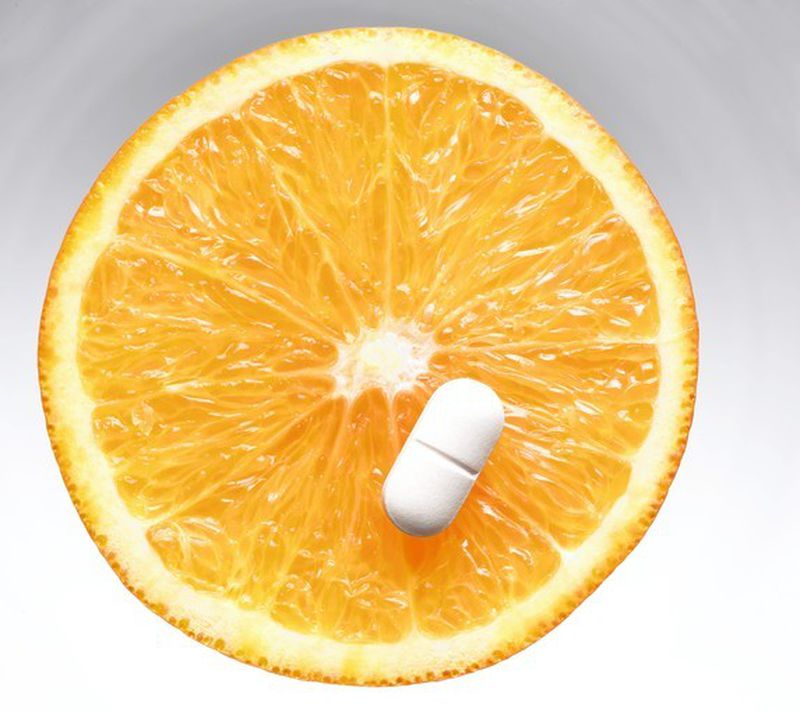Prairie Fare: Supplement like nutrition insurance
“She’s the only one who took her vitamin all week,” my husband noted. He was referring to our 8-year-old daughter.
I looked in the pill dispenser marked letters corresponding to the days of the week. We had a busy week, and on some days, my youngest daughter’s orange vitamin was the only one missing from the slots in the dispenser.
Because none of us take any prescription drugs, I was using it for vitamins. We each have our own “once-a-day”-type of vitamin-mineral supplement with 100 percent of the daily value for various nutrients. I consider it our nutrition insurance. My son’s vitamin is blue, my older daughter’s is red, mine is gold and my husband’s vitamin is gray.
“She thinks they’re candy!” her 13-year-old sister remarked.
“I think she eats more than one vitamin a day,” her 16-year-old brother teased.
“I do not!” my youngest daughter retorted loudly.
Hoping to end the sibling discord, I personally distributed the vitamins for the day, refilled the dispenser for the upcoming week and set it in the middle of the kitchen table.
I really wasn’t worried if we missed taking a vitamin. We eat balanced meals at home. However, I am not exactly sure what they eat when they are at school, and my kids really would not appreciate a daily nutritional intake interview with me.
For one thing, I want my family to get an adequate amount of vitamin D during the winter months. Our bodies need vitamin D to build and maintain healthy bones, and vitamin D has many other roles related to overall health.
Without sun exposure, getting adequate vitamin D can be challenging. To meet current recommendations, you would need to drink six cups of milk per day or have alternate sources of vitamin D.
Besides vitamin D, my vitamin-mineral supplement is formulated for women and includes extra calcium to help me maintain stronger bones.
Vitamins and minerals have numerous functions in our body. Some people are at nutritional risk and need a dietary supplement more than other people. Pregnant women, breast-feeding women and those capable of becoming pregnant have special nutritional needs.
Young children and older adults may be at nutritional risk. Strict vegetarians, people who smoke and those who drink more than two alcoholic beverages per day often are advised to take a supplement.
When choosing a dietary supplement, always talk to your doctor or other health care provider before taking them. Some supplements can interfere with prescription or over-the-counter medications.
If you decide to take a supplement, do your homework. Choose a supplement that provides no more than 100 percent of the daily value (DV) for vitamins A, C, D, E, folic acid, thiamin, riboflavin, niacin, B12 and at least 11 minerals.
Remember that you are getting vitamins and minerals from the foods you eat.
Foods, such as cereals and beverages, often are fortified with vitamins and/or minerals. You may be getting more of these nutrients than you realize, so read the labels.
Always carefully read the label before buying a supplement. Look for:
• Directions for use: Take the supplement in the recommended dosage. Do not take a second dose when you have missed a meal.
• Ingredient list: Check for added fillers, especially if you have allergies.
• Expiration date: Vitamins can lose their potency through time.
• A childproof cap: Certain vitamins and minerals can be especially toxic to children. Keep them out of the reach of young children.
• Name of the manufacturer: Choose a known manufacturer with a good reputation.
• Certification seal of approval: Look for supplements with the USP label. This indicates that the manufacturer of the product chose to be evaluated for quality standards of identity, purity, strength and composition of the product.
Here’s a nutrient-rich energy bar loaded with healthful ingredients such as nuts, dried fruit and whole-grain oats. If you choose to make it, read the Nutrition Facts labels to see the nutrients in the food.
Peanut Energy Bars
¼ cup dry roasted peanuts
¼ cup roasted sunflower seeds or other chopped nuts
1 cup raisins or other chopped dried fruit
1 cup rolled or quick-cooking oats
1 cup toasted rice cereal, such as Rice Krispies
½ cup semisweet chocolate chips
½ cup creamy or crunchy peanut butter
¼ cup packed brown sugar
½ cup honey
½ teaspoon vanilla extract
Coat an 8-inch square baking pan with cooking spray. Combine peanuts, sunflower seeds (or other nuts), raisins (or other dried fruit), oats, chocolate chips and rice cereal in a large bowl. Combine peanut butter, brown sugar and honey in a small microwaveable bowl. Microwave on high until bubbling around the edges, one to two minutes. Add vanilla and stir until blended. Pour the peanut butter mixture over the dry ingredients and stir until coated. Transfer the mixture to the prepared pan. Press down firmly. (It helps to coat your fingers with cooking spray.) Let stand for about one hour to harden. Cut into bars.
Makes 16 servings. Each serving has 210 calories, 7 grams (g) of fat, 5 g of protein, 34 g of carbohydrate, 2 g of fiber and 95 milligrams of sodium.



